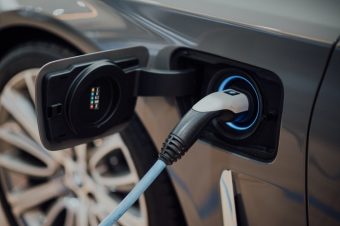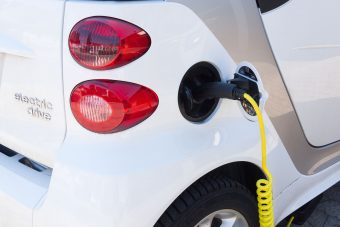
Without drastic action, emissions from mobility are on track to double by 2050 – making climate change irreversible and leading to a global misery greater than the pandemic.
During the recent COVID-19 crisis, a growing number of cities announced their plans to forge multi-modal sustainable urban mobility ecosystems, with public transport and active travel as a critical city-supported backbone. Electrification is a key part of these plans. To accomplish these goals, electrifying fleets provide a unique opportunity to scale change.
“If high-kilometre vehicles in cities electrify at scale, we may stand a chance at climate change and clean urban air,” said Dr. Christoph Wolff, the World Economic Forum’s Head of Mobility Industries and System Initiative.
Where fleets fit in
The electric vehicle (EV) transition is gaining momentum but change will be gradual. According to current forecasts, just 8 percent of the 1.4 billion passenger vehicles on road in 2030 will be electric. At that pace, electrifying private vehicles won’t happen quickly enough to halt global warming below a 2 degree increase (let alone the desired 1.5).
Fleets, however, offer a special opportunity to scale progress. By electrifying fleets, we can accelerate electrification by 3-4 times during the next decade. Fleet operators and facilitators – from buses and microtransit to ride-hailing platforms, taxies, delivery vehicles, lease firms and fleet operators – represent increasing buying power. As facilitators of urban fleets, they are capable of propelling a greater variety of zero emissions vehicles selection at a faster production rate.
“The role of business in driving the electric vehicle market is crucial.”
—Sandra Roling, Head of Transport, Climate Group
Furthermore, fleets offer a special opportunity to make progress on emissions. By electrifying urban fleets, we can mitigate more than 70 percent of mobility CO2 urban emissions, remove 50 percent of city air pollution, and electrify rides for everyone – making the electrification transition more effective and equitable.
“Two-thirds of new vehicles in Europe are bought for company fleets, which means the role of business in driving the electric vehicle market is crucial,” said Sandra Roling, Head of Transport at the Climate Group, an international non-profit.
More:
Moreover, fleet electrification extends to all types of users, making the transition more equitable than through privately owned EVs. The economic benefits from owning an EV are bigger for fleets than private users. Although comparisons are not apple to apples, lease companies and mobility services companies assert that total cost of ownership is largely lower for EVs with high mileage already today – boosting their replacement rates.
Lastly, by combining electrification with shared and automated rides, we can further reduce carbon emissions from 4,600 to less than 700 megatons by 2050 while also accounting for increasing mobility demand.
What’s needed next
Electrifying fleets will not happen overnight. It will require multiple changes to cities and production lines to ensure that drivers have access to vehicles and charging stations. Explained Lime CEO Wayne Ting: “The only way to meet our global carbon challenge is through the electrification and decarbonization of the entire transport sector.”
For cities

Despite the pandemic and its harsh impact on the transportation sector, fleet electrification has managed to gain traction. Uber’s SPARK! report committed to 50 percent electric rides across 7 key cities like London, Paris and Madrid by 2025 and Bolt, Free Now, Lyft, and Ola have also announced commitments to rapid fleet electrification. LeasePlan has already achieved success, with 16.2 percent of all new deliveries being for EVs or plug-in hybrids.
Additionally, 31 cities to date announced plans for phasing out sales of internal combustion vehicles over the coming 10 to 20 years, and more cities are designing zero-emission areas. City coalitions and International Organizations are also providing structured support to cities (e.g. C40, Polis Network leading ReVeAl under the European Commission, OECD-ITF, WEF-GNMC) and NGOs advocate (e.g. T&E, WeMeanBusiness and Race to Zero). With this progress, it becomes clearer that starting with fleets electrification, cities’ commitments can be delivered more efficiently.
“We believe that commercial drivers will be able to electrify in just a few years, and that the mass market will follow.”
—Anabel Diaz, Regional General Manager for Europe, Middle East and Africa, Uber
In fact, e-mobility is embedded in holistic strategies for sustainable, clean and liveable cities, explained Karen Vancluysen, Secretary General, Polis, a network of European cities and regions cooperating for innovative transport solutions. “Electrification goes hand-in-hand with a multi-modal approach in transport. Our cities and regions often assume a leading role in upscaling electromobility, for example through the rollout of recharging infrastructure and low or even zero-emission zones.”
City authorities have a key role in reducing emissions, added Peter Staelens, Senior Project Coordinator at Eurocities. “When city authorities invest in green urban fleets, it inspires and incentivises other road users to make the switch.”
London, for instance, is pushing micro mobility options for shorter rides and fully electric vehicles to operate longer distance trips. Said Marc Berg, CEO of FREE NOW, a mobility service provider that also licenses a ride-hailing app for taxis: “Our ‘Move To Net-Zero’ initiative aims for 50 percent of all rides being operated by fully electric vehicles until the end of 2025 and 100 percent by 2030. In London we’ll meet the goal of 100 percent zero emission rides already in 2025.”
For manufacturers
The transition to multimodal urban mobility (where fleets are electrified by 2030) will not be possible without vehicle manufacturers’ commitments to all-electric and net-zero carbon production in the immediate term.
Luckily, vehicle producers are on track to fulfill this demand. GM announced 30 EV models by 2025, Renault’s sustainability plan rEVolution is on path for zero emissions of 2050 (with a suite of EVs underway), and Daimler has declared it will achieve carbon neutrality by 2039.
New technologies will also play a role, said Doug Miller, Market Development Manager, Energy Web. “Open-source decentralized technologies – namely, the combined use of public blockchains, decentralized identifiers, and decentralized registries – make it easier to enroll, activate, track, and prove EV participation in all applicable markets in a streamlined, low-cost way to unlock the full potential” of EVs and for EV customers.
For policy-makers

Additionally, new policies may be needed to boost affordability, ensure reliable access to charging stations and bridge the cost gap drivers face when making the switch to electric, explains Anabel Diaz, Regional General Manager for Europe, Middle East and Africa at Uber. “Once these three barriers are addressed, we believe that commercial drivers will be able to electrify in just a few years, and that the mass market will follow.”
Such efforts, in concert, can create a dramatic impact. “By lowering barriers to entry for everyone we are driving innovation with the adoption of shared and electric mobility, accelerating the transition to a sustainable future”, said Gunnar Froh, CEO & Co-Founder of Wunder Mobility, a technology company enabling public and private mobility operators worldwide to launch and scale new mobility services, from electric kick-scooters to e-mopeds and shared electric cars.
New collaborations
The challenge has been accepted by private, public and third-party actors. However, coordination is needed to harness these commitments and positive energies and transform them into tangible changes.
Such efforts are already in motion. This month, the World Economic Forum launched a collaborative umbrella network that will help sync and synergize related global initiatives: the Zero Emissions Urban Fleets (ZEUF) network.
The ZEUF network, initiated by the World Economic Forum’s Global New Mobility Coalition in partnership with Uber, T&E, EuroCities, Free Now, LeasePlan, Door2Door, Lime, Blot, Voi, AEDIVE, Polis, The Climate Group, Race to Zero, and others will convene relevant stakeholders periodically to facilitate informal know-how exchange and efforts coordination.
“We all need to work together and play our part to fight climate change.”
—Tex Gunning, LeasePlan CEO
ZEUF initiators will further work to increase awareness about fleet electrification benefits, instrumental partnership models, and adopted transition pathways. In 2021, these efforts will focus on placing European city actors on path to achieve a 50 percent and 100 percent electrification by 2025 and 2030, respectively.
Such coordination, across business and policy makers, is key. “In the vehicle fleet, electric cars are the first step towards a holistic, intelligent mobility concept, but we need to align government strategies with industry and services to remove as soon as possible the barriers to the deployment of electric mobility”, said Arturo Perez de Lucia, CEO of AEDIVE, the Business Association for the Development and Promotion of Electric Mobility.
Roling agreed: “Collaboration across the whole transport system is key to addressing these issues and unlocking a zero emission future in our cities and beyond.”
With these new partnerships in place, true progress is possible. “There will be no existence without co-existence,” explained Tex Gunning, LeasePlan CEO. “We all need to work together and play our part to fight climate change.”
Source: World Economic Forum



